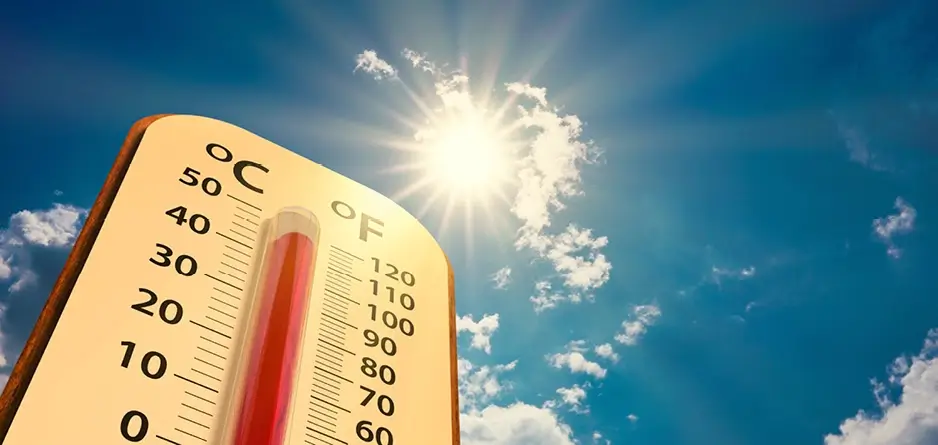Summer Survival Guide: How to Deal with Heat Cramps Effectively

Area
In short…
- Understanding Heat Cramps: Painful muscle spasms caused by dehydration, electrolyte imbalance, and overexertion in hot conditions.
- Prevention & Management: Stay hydrated, replenish electrolytes, avoid overexertion, wear breathable clothing, and stretch affected muscles.
- Effective Relief with Crampeze: A targeted formula with magnesium, cramp bark, and Ginkgo biloba to relieve, prevent, and manage heat cramps.
As the temperature rises during the summer months, the risk of experiencing heat-related ailments increases. One common issue is heat cramps, a condition that can affect anyone exposed to high temperatures, particularly during physical activity. Heat cramps can cause discomfort, hinder daily activities, and, if left untreated, may lead to more serious heat-related illnesses. In this guide, we will explore what heat cramps are, their causes, and why Crampeze can be an effective solution for treatment, relief, and prevention.
What Are Heat Cramps?
Heat cramps are involuntary, painful muscle spasms that typically occur in the legs, calves, or abdominal muscles. They are a form of heat-related illness caused by the loss of essential electrolytes and fluids due to sweating. These cramps can strike during or after intense physical activity, especially in hot and humid environments.
While heat cramps are often associated with athletes or outdoor workers, anyone can be affected. They serve as an early warning sign of heat exhaustion, making it crucial to address them promptly to prevent progression to more severe conditions.
Causes of Heat Cramps
The primary causes of heat cramps include:
- Dehydration: Excessive sweating during physical activity leads to a significant loss of fluids, reducing the body’s ability to maintain proper muscle function.
- Electrolyte Imbalance: Key minerals like sodium, potassium, calcium, and magnesium are lost through sweat. These electrolytes are essential for muscle contraction and relaxation.
- Overexertion: Intense physical activity, particularly in hot weather, can overwork muscles and increase the risk of spasms.
- Poor Conditioning: Individuals who are not acclimatised to hot conditions or who have inadequate fitness levels are more prone to heat cramps.
Symptoms of Heat Cramps
The symptoms of heat cramps include:
- Sudden, sharp pain in the affected muscle
- Hard, knotted muscles
- Persistent muscle spasms lasting a few seconds to several minutes
- Residual soreness or discomfort following the cramp
These symptoms can disrupt physical activities and, if not managed, may progress to heat exhaustion or heat stroke.
Preventing Heat Cramps
Preventing heat cramps requires a proactive approach to hydration, nutrition, and activity management:
- Stay Hydrated: Drink plenty of water before, during, and after physical activity. Incorporate electrolyte-rich drinks to replenish lost minerals.
- Acclimatise Gradually: Allow your body to adjust to hot environments by gradually increasing activity levels over several days.
- Monitor Activity Levels: Avoid overexertion, especially during the hottest parts of the day. Take regular breaks in shaded or air-conditioned areas.
- Eat a Balanced Diet: Ensure your meals include foods rich in electrolytes, such as bananas, leafy greens, and nuts.
- Wear Appropriate Clothing: Opt for lightweight, breathable fabrics to minimise heat retention.
Managing Heat Cramps Effectively
If you experience heat cramps, taking immediate steps to alleviate discomfort and address the underlying causes is essential:
- Stop Activity: Rest in a cool, shaded area to lower your body temperature.
- Hydrate: Replenish fluids with water or an electrolyte-rich beverage.
- Stretch and Massage: Gently stretch and massage the affected muscle to relieve spasms.
- Apply Heat or Cold: Use a warm compress to relax tight muscles or a cold pack to reduce inflammation.
Why Crampeze is Effective for Heat Cramps
Crampeze is a comprehensive solution for managing and preventing muscle cramps, including heat cramps. Its unique formulation addresses the key factors contributing to muscle spasms, making it an excellent choice for treatment, relief, and prevention during the summer months.
Key Ingredients and Benefits
- Magnesium:
- Essential for muscle relaxation and reducing muscle excitability.
- Replenishes magnesium lost through sweat, aiding in cramp prevention.
- Viburnum Opulus (Cramp Bark):
- A traditional herbal remedy known for its muscle-relaxing properties.
- Helps alleviate the intensity and duration of muscle spasms.
- Ginkgo Biloba:
- Supports blood circulation, particularly to extremities like legs and calves.
- Enhances oxygen and nutrient delivery to muscles, aiding recovery.
How Crampeze Works
Crampeze offers a multi-faceted approach to combating heat cramps:
- Relief: Quickly alleviates the pain and discomfort of muscle cramps through targeted muscle relaxation and improved circulation.
- Prevention: Supports ongoing muscle health by replenishing magnesium and electrolytes, reducing the likelihood of cramps during physical activity.
- Convenience: Available in an easy-to-use capsule & tablet format, Crampeze fits seamlessly into daily routines to remedy acute cramps.
When to Seek Medical Attention
While heat cramps are often manageable, seek medical attention if:
- Cramps persist despite treatment.
- Symptoms are accompanied by nausea, dizziness, or confusion (signs of heat exhaustion).
- There is no improvement after hydrating and resting.
Stay Active and Cramp-Free This Summer
Heat cramps can disrupt summer activities, but they are preventable and manageable with the right strategies. By staying hydrated, managing your activity levels, and incorporating effective treatments like Crampeze into your routine, you can enjoy a cramp-free summer and make the most of the summer months!
Whether you’re an athlete, outdoor worker, or someone who loves summer adventures, understanding how to deal with heat cramps effectively is key to maintaining comfort and performance in hot weather.
For more general tips on cramp prevention, explore the Top Tips on Cramp Relief by Gerald Quigley!







